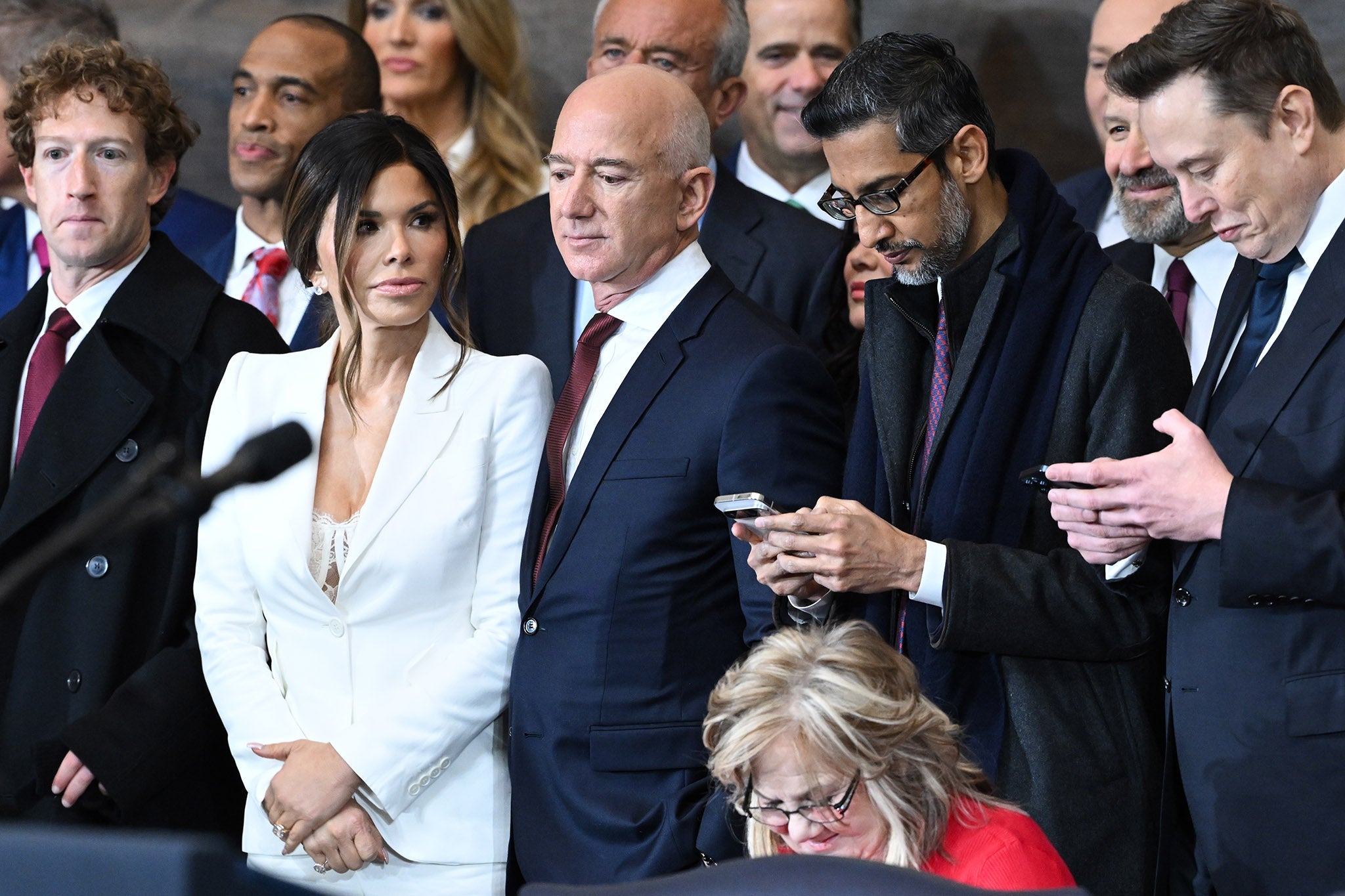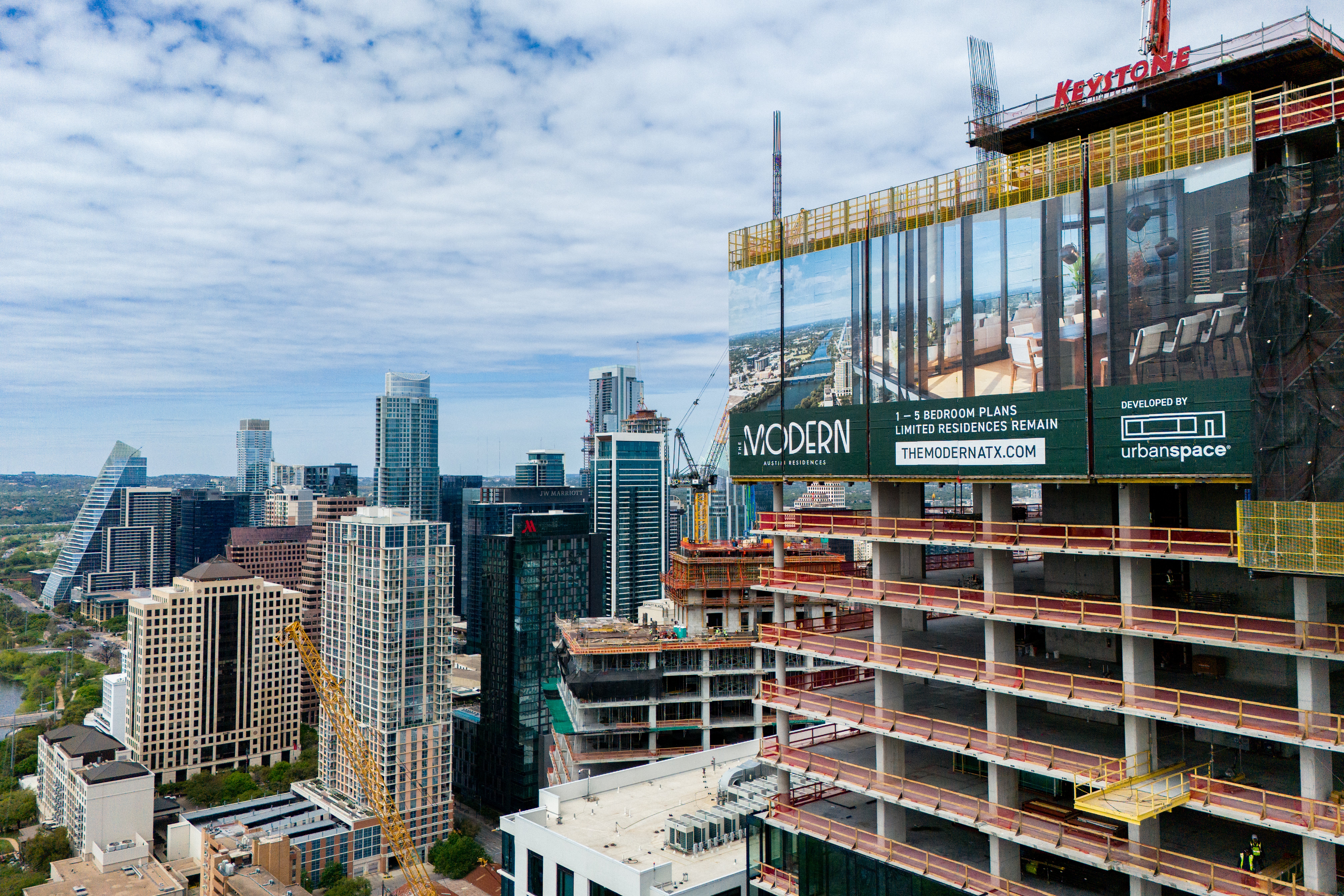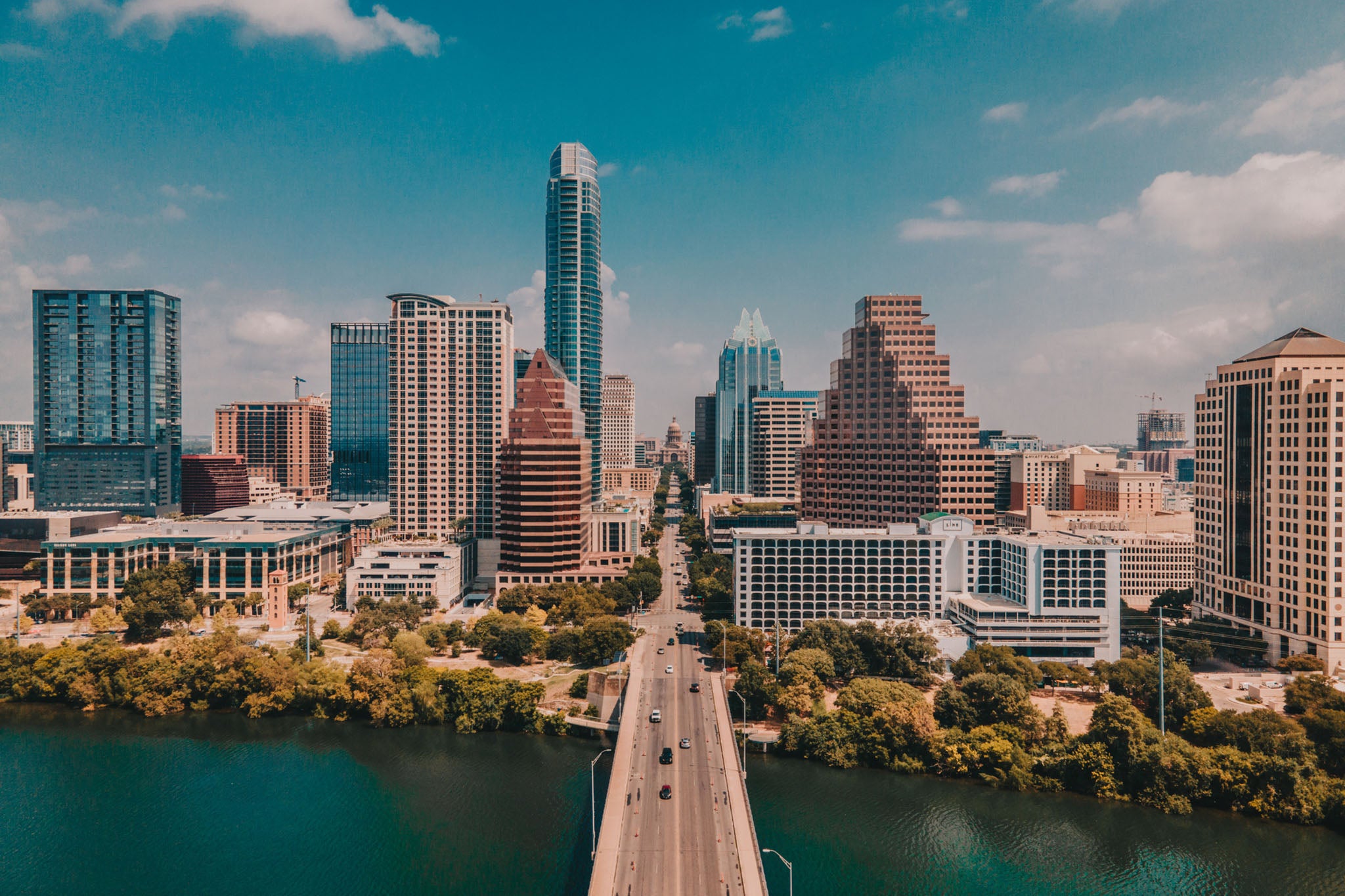The tech bros ruined America’s coolest city and they are about to ruin the country too
In the court of ‘king’ Trump, a new ‘broligarchy’ of tech titans has emerged, posing dangers to ordinary citizens who will bear the brunt of their unchecked mega-wealth and influence on daily life, says Alex Hannaford

As Donald Trump took the oath of office on 20 January to become the 47th president of the United States, watching from the second row where politicians and long-serving government officials once sat was a collection of tech billionaires instead.
Elon Musk looked like he'd purchased his seat with the same casual largesse he applies to buying social media platforms. Sundar Pichai of Google appeared calculated, a corporate chess piece positioning himself for the next move. Jeff Bezos was busy smizing, barely concealing his ambition to secure government contracts for his space company, Blue Origin.
And then there was Mark Zuckerberg – nerdy, harmless ol’ Zuck, like a graduate student who’d wandered into the wrong room, but whose embracing of Trump seems, somehow, the most egregious. Perhaps we thought better of him?
This wasn’t just an inauguration. This was a transaction – a public display of how power now moves in modern America. Not through votes, but through carefully calibrated access. On a day meant to honour Martin Luther King Jr’s legacy of justice, the presidential inauguration instead showcased a gaggle of tech billionaires whose combined wealth dwarfed that of the millions of working-class voters who’d delivered Trump his narrow electoral victory.
The lineup on 20 January told us an ugly story about who wields the real power in Washington. And as we wait to find out what the world looks like when Tech titans run the show, there’s a place we can look that may offer a hint of things to come.
I’ve seen what the influx of wealthy tech bros has done to my favourite American city: Austin, Texas. In fact, I have just written a book about it. I moved to Austin from London in 2003. Almost two decades later, I packed my bags and shipped out – to upstate New York. The changes the city had undergone had, for me at least, become too disturbing, too profound.
When I first moved to the Texas capital it seemed like the coolest, most laidback city I’d ever been to; people came there seeking big, unapologetic, Texas-style living, combined with a cultivated atmosphere that encouraged individual expression.
But it was more than that too. It was affordable. Diverse. Welcoming of immigrants. But by 2020, it had changed. As I wrote in my book Lost in Austin: “Property prices, taxes, and rents were soaring; cars and trucks sat bumper to bumper on congested highways; the convection-oven weather had finally taken its toll; and, for [me and my family] at least, Austin’s magic was evaporating in that heat.”
For nearly two decades, I’d had a front-row seat to the meteoric changes in one of the most rapidly expanding cities in America. The New York Times called its real estate market a “madhouse”, saying it had forced regular people to act like “speculators”.

It was the only major growing city in America to have a declining Black population. What’s more, it was still trading on its credentials as the “Live Music Capital of the World” … yet working musicians couldn’t afford to park downtown to unload their gear, let alone live there.
Ultimately, as Big Tech moved in, enjoying the benefits of Texas state, where individuals don’t have to pay income tax, Austin had become a microcosm of unchecked growth. The infrastructure, traffic, the environment, and longtime residents bore the brunt and the city’s unique character, once its defining feature, had all but vanished.
Austin’s explosive construction boom transformed its landscape beyond recognition and a widening rift between the rich and poor emerged. While the wealthy could afford to live in the city, others who worked there were priced out, unable to call Austin home despite their contributions to its community.
While I was researching my book, I discovered a study of Austin from the 1980s by an urban planning professor called Dowell Myers. When I dug in, I quickly realised how important – and prescient – it was. Myers’s research challenged traditional notions of quality of life, arguing that it encompasses not only objective measures like income and crime rates, but also subjective experiences and community perceptions like a vibrant music scene and the rivers and water holes that contributed to the city’s allure.

During the late 1970s and early 1980s, Austin actively promoted these exact qualities to attract high-tech firms to the city. The arrival of microelectronics and computer technology corporations in 1983 marked a significant milestone in its economic development, helping diversify its economy which had previously relied heavily on the University of Texas and state government.
But Austin’s rapid tech growth came at a cost: rising property values and rents forced some music venues to close, while others were demolished to make way for new offices. In fact, Myers’s study warned that the very factors driving Austin’s economic success threatened to undermine its unique character. Big Tech was a threat to what he called the “goose that laid the golden egg”.
Myers’s predictions back then only partially materialised. A downturn in the economy in the late 1980s stemmed the growth and Austin became affordable once more. Fast-forward two decades, though, and as its tech industry boomed once more, concerns about affordability, gentrification, and the erosion of the city’s cultural identity resurfaced.
Today, that rapid growth has led to increased cost of living, rising property values, and the displacement of longtime residents – just as it has in San Francisco.
The soul of Austin is suffocating under the weight of sameness. The city’s once eclectic landscape is giving way to a sterile, cookie-cutter aesthetic that’s indistinguishable from countless other metropolises across America. Austin became a more prosperous city, yes, but in my mind duller and, in some ways, more dangerous because of the widening gap between rich and poor. I believe that as the power and influence of the new “brotocracy” increases, the rest of America is in danger of following suit.
Just as I was packing up to leave Austin, Joe Rogan, the ubiquitous podcast host, was settling into a sprawling $14.4m mansion. In his words, the muscle-bound, middle-aged comedian and MMA commentator had come to Texas in search of “a little bit more freedom”.
By the time he arrived, The Joe Rogan Experience had become the most listened-to podcast in the US, courting controversial guests and topics in equal measure. Rogan labelled conspiracy theorist Alex Jones “the most misunderstood guy on the planet”, and indulged in anti-transgender tirades. That same ethos made him a natural fit for Texas – a state ready-made for the new Trump era.
Rogan wasn’t a tech titan, but his anointing of Trump on the eve of the election, and the worldview he espoused on his show, showed they were birds of a feather. And his wasn’t the only larger-than-life personality reshaping Austin.
Elon Musk was already running SpaceX when he announced Tesla’s move to Texas in 2021, and he leaned into his role as a modern-day industrialist with a taste for controversy. When not tweeting that the pandemic was “dumb” or peddling dubious Covid treatments, he was arguing that Taiwan should become part of China or proposing peace plans for Ukraine that read like Kremlin wishlists.
And then there was Tim Ferriss, the self-help guru who when he landed in Austin was already known for his bestselling book The 4-Hour Workweek, in which he sold the dream of escaping the nine-to-five, outsourcing labour to developing countries, and becoming an “expert” in whatever your chosen discipline in just a few weeks. The book resonated with Silicon Valley’s efficiency-obsessed set and seemed tailor-made for Austin’s new tech bro class.

Joe Lonsdale, the billionaire tech mogul behind Palantir, arrived in the Texas capital around the same time wearing cowboy boots and carrying a concealed weapon permit. He had launched Palantir, a company criticised for its role in developing surveillance tools used by governments, including collaborations with US Immigration and Customs Enforcement on deportations, and with Peter Thiel, one of the few prominent figures in Silicon Valley to openly support Trump during the 2016 presidential election.
Now Lonsdale was an Austinite who had moved his investment firm to the city and was ready to launch a new higher-education experiment. The brainchild he had with two others, the University of Austin — not to be confused with the University of Texas — promised a safe haven for academics allegedly silenced by “cancel culture.” Austin had become a magnet for these self-styled disruptors – or “bro saviours”. They were changing the city, remaking it in their image. The old Austin, with its eccentric charm, laidback vibe and commitment to celebrating the diverse community that had made it, was vanishing.
The transformation of Austin is no longer just a local story; it’s a cautionary tale for the rest of America. And as the bro saviours expand their reach, turbocharged by the political winds of Trump’s resurgence, it’s worth asking: What happens when every city becomes a fiefdom of algorithms, hedge funds, and hollow promises of freedom?
When people with ordinary jobs – teachers, nurses, firefighters are priced out of their communities, the indications are that they are not valued by society. As Trump looks to the tech billionaires for solutions and answers, he is failing to notice that they might just be his biggest problem. And that might be the most American tragedy of all.
Alex Hannaford is the author of ‘Lost in Austin: The Evolution of an American City’, published by Dey St/Harper Collins


Join our commenting forum
Join thought-provoking conversations, follow other Independent readers and see their replies
54Comments